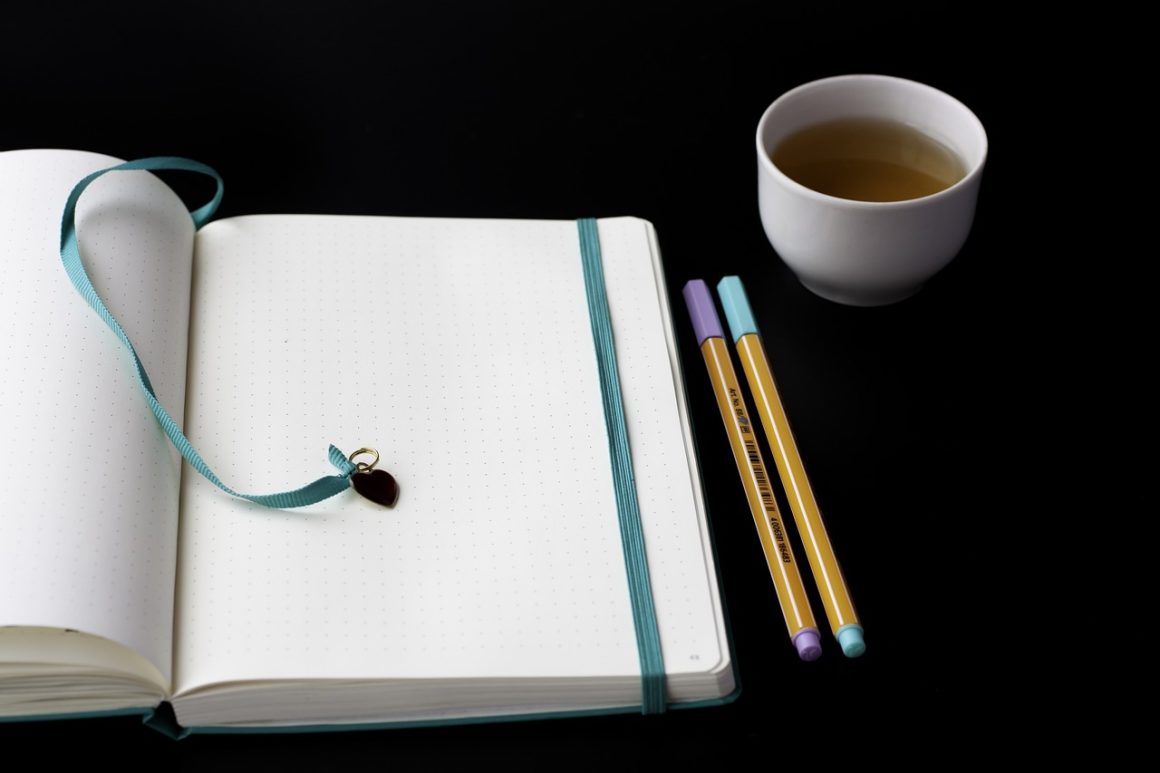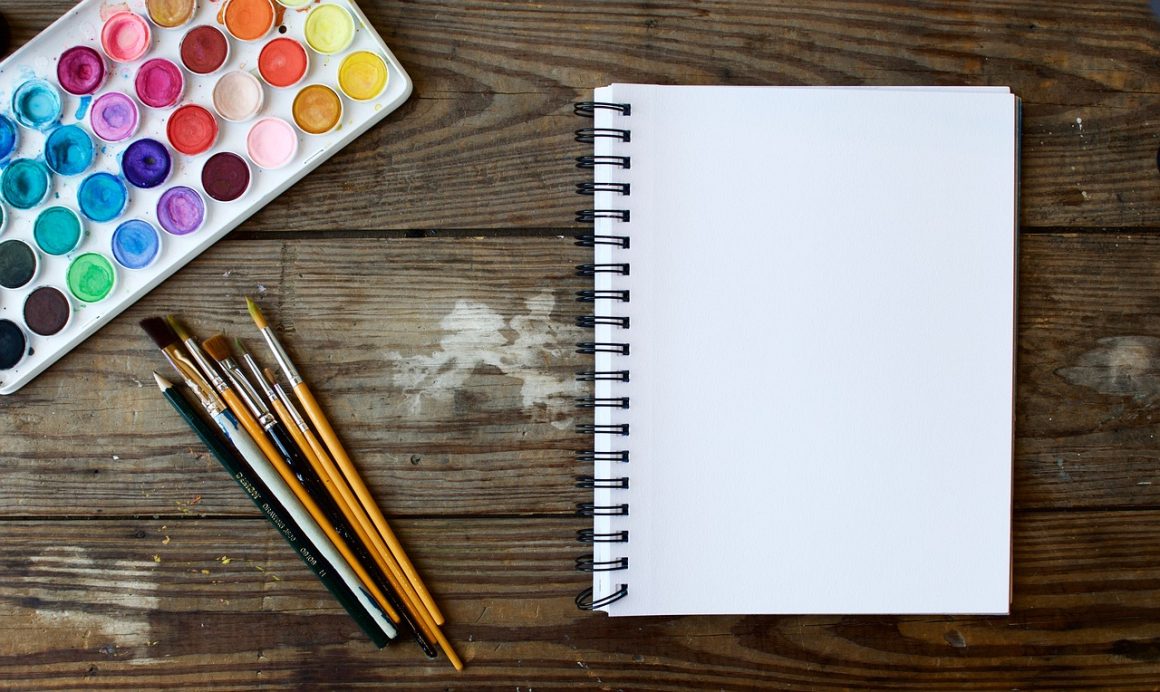Working with colored pencils can be equal parts exciting and frustrating. Frequently, frustration arises from not knowing which paper is appropriate for a given project.
Knowledge comes with experience, but for now, it’s necessary to depend on a bit of expert advice so that you don’t waste time and money.
After extensive testing, we have arrived at a list of choices for the papers for colored pencils. We looked at the tooth, or the paper’s textured surface, as well as its weight in reaching our decisions. Color, cost, and durability also were important factors.
Best Paper for Colored Pencils:
1. Strathmore Series 400 Sketch Pads 9 In. X 12 In. – 2 pack – 100 Pgs Each
This wire-bound, 9″ by 12″ notebook features 100 sheets for long-term use. The 60-pound paper is the ideal weight, and the fine-toothed surface is perfect for sketching. With an affordable price, the Strathmore sketch pad is sensibly priced as well.
This selection is named the drawing paper for Prismacolor colored pencils because it is specifically designed for practicing and experimenting with a variety of techniques. The Strathmore 400 Series is intended for use by advanced artists who require sheets with superior formation.
A heavy chipboard backing makes this a sturdy choice that artists easily can use when they are on the go. When it’s time to tear out a page, micro-perforations make this a neat process. Additionally, the fine-tooth surface of the paper stands up remarkably well to repeated erasures. Because the paper is acid-free, it will not adversely affect the longevity of the art recorded there.
Artists say that they love the wire binding in this pad as it allows them to easily flip through the pages without damaging them. They also appreciate the bright-white color and the smoothness of the pages.
People also praise this sketchbook for holding up well. Critics say that the pages tend to curl at the edges. The Strathmore 400 Series Sketch Pad is a great practice medium for beginning and advanced artists.
Pros
- Wire binding
- Good perforation for easy tearing out
- Heavy chipboard backing
Cons
- Paper may curl at the edges
2. Canson XL Series Mix Media Pad Sizing for Wet and Dry Media
Many people consider this Canson product to be the sketchbook for colored pencils. The 98-pound paper is pretty heavy-duty, making it appropriate for art projects that are intended to stand the test of time.
Thanks to the heavy paper, this selection works well not only with colored pencils but also with watercolors and light washes of ink. One 7″ by 10″ sketchpad may be purchased for a budget-friendly price.
This spiral-bound pad includes 60 sheets, each of which is micro-perforated for easy removal. Whether wet or dry media, this fine-textured paper stands up to use, including lots of erasing and blending.
Many people praise the Canson XL Series for being portable and easy to use. It is considered an ideal choice for beginning artists, and many users are delighted with how sturdy the spiral binding is.
Perhaps the most frequent critique is that the perforation is almost too sensitive, causing pages to rip out when the artist prefers that they remain intact.
The Canson XL Series Mix Media Paper Pad is ideal for use with colored pencils from Prismacolor.
Pros
- Fairly heavy-duty paper
- Durable spiral binding
- The paper performs especially well with colored pencils
Cons
- Sheets may seem too perforated
3. Strathmore 10014430 400 Series Colored Pencil Pad Wire Bound
The name of this product says it all. Strathmore specifically designed this sketchpad for use with colored pencils, and this 9″ by 12″ product may be purchased for a small price. With 30 sheets of 100-pound paper, artists may expect their creations to stand the test of time.
This sketchpad includes paper that is intended for finished artwork rather than for practice or classroom experimentation. Accordingly, the paper is a heavier weight and has a medium surface.
This pad can easily be considered paper for drawing with colored pencils because it works so well with Prismacolor. However, many artists find that other colored pencils perform just as well on this quality paper.
Many people mention in reviews that this paper works particularly well with Prismacolor pencils. The thickness of the paper generally is admired, and several people mention that the surface has a nice tooth.
However, some users say that they experienced warping in the paper when they tried to use too many layers of graphite.
The Strathmore 400 Series Colored Pencil Pad is an excellent choice for finished artwork.
Pros
- 100-pound paper
- Designed for use with colored pencils
- Acid-free
Cons
- May warp when several layers of a colored pencil are applied
4. ARTEZA 9X12 Drawing Pad, Spiral Bound Artist Drawing Books
A set of two ARTEZA 9″ by 12″ drawing pads may be purchased for an affordable price tag. Each pad contains 100 premium sheets of 100-pound paper. Color deterioration is prevented thanks to the acid-free nature of this paper. The pads are spiral-bound, and each sheet is perforated for easier removal.
This is the paper for colored pencil art because each sheet is slightly textured. Making for more nuanced expression, this feature also allows for cleaner erasure. In addition to using this paper for sketching with colored pencils, it is appropriate for use with pens, crayons, and charcoals.
Fans praise this product for offering excellent quality at an affordable price point. Many of them also say that they like having the spiral at the top of the pad and that they appreciate the weight of the paper.
One complaint lodged by a few users is that the paper isn’t white.
If you’re looking for sketching pads that promise excellent quality without being expensive, these products from ARTEZA may be the way to go.
Pros
- Excellent value
- Heavy paper
- Slightly textured
Cons
- The Paper may not be white enough for some
5. Strathmore 300 Series Bristol Smooth Pad, 9″x12″ Tape Bound, 20 Sheets
Intended for use with colored and graphite pencils as well as charcoal, oil pastel, airbrush, mixed media, and sketching sticks, this is the paper for pencil drawing.
Each of the 20 sheets in the 9″ by 12″ pad features a smooth surface. The 100-pound paper is heavy enough for finished artwork, and because it is acid-free, colors won’t fade.
This pad is bound by tape. It’s also available in sizes such as 11″ by 14″, 14″ by 17″, and 19″ by 24″. Intended for beginners and students, this paper is perfect for completing that final project. Heavy chipboard backing ensures the longevity of the pad. People love how easy it is to remove sheets from the pad.
Some artists use both markers and colored pencils on the same piece of art, and they say that this paper stands up to everything. If critics could improve this product, they would want it to come with more than 20 sheets.
Beginners and students who are working toward a finished piece will love this Strathmore pad.
Pros
- Excellent paper for use with colored pencils
- Perfect weight for finished projects
- Inexpensive for the quality
Cons
- Only 20 sheets
6. Strathmore 400 Series Pastel Pad, Assorted Colors, 9″x12″ Glue Bound, 24 Sheets
This high-quality drawing paper may be just what you need to inspire your next great work. Each pad features 24 sheets of acid-free paper.
While it is intended for oil pastel or dry pastel drawing, it works equally well with colored pencils. The textured finish of the paper gives every piece a unique and refined look.
Texture also makes blending easier and holds onto more pigment.
Each pad contains six assorted tints. As this is part of Strathmore’s 400 Series, this paper is intended for advanced artists. People love the 80-pound paper and the glue binding on the pad is a plus for some. It’s really easy to flip over the cover so it’s out of the way during use.
A heavy chipboard backing makes this pad a sturdy choice. However, many people note that the pages quickly came loose from the glue binding.
Advanced artists who are working on the last stages of a project may be delighted with this product.
Pros
- Lovely pastel-colored paper
- Excellent texture
- Heavyweight paper for finished projects
Cons
- The paper may not stay in binding
7. Arches Watercolor Block, Cold Press
This 9″ by 12″ product is undoubtedly an expensive choice, but it also is the paper for colored pencils. A bit pricey, it contains just 20 sheets. However, these sheets are of rare quality.
Each one is manufactured with natural cotton fibers using a cylinder-mold machine. While it is designed for use with watercolors, airbrushing, and more, it performs excellently well with colored pencils.
This 100-percent cotton paper is acid-free and has undergone a cold-pressing process. In other words, this is a professional artist-grade paper. Each one is glued on all four edges to ensure that it adheres to the others. Use a thin knife to pry off the top sheet when you’re ready.
Because this is a cold-press watercolor paper, it has an excellent tooth. Artists love this high-quality, made-in-France paper. Separating the sheets is easy, and many people remark that this paper is so fabulous that they’ll never consider another brand.
Few complaints are made about this product. When they appear, it usually has to do with the black binder glue sticking to the edges of the sheet after it is removed from the block.
If you want your artwork to have the look and feel of a professional artist, then you can’t go wrong with this selection.
Pros
- Incredible-quality paper
- Cold-pressed, 100-percent cotton
- A sturdy block that won’t wrinkle or warp
Cons
- There may be some black residue on the edges of each sheet after the removal
8. Fabriano Artistico 140 Pound Paper for Colored Pencils
If you like to combine your colored pencil work with watercolors, then you may find that this choice is the right one for you. This Fabriano Artistico 140-pound paper is easily the paper for watercolor and colored pencil projects.
Because it is a sheet block rather than a pad, all four edges of each page are glued to each other. This makes it possible to use watercolors without having to stretch the media or worry too much about wrinkling and warping.
When you need to remove the top sheet, just slip a slim knife between the pages, and work it around the four edges. This block measures 9″ by 12″ and contains 20 sheets of cold-pressed paper.
Each sheet is pH-neutral and acid-free to protect your work over many years. Made of 100 percent cotton, this paper features a slight texture. This heavyweight paper is a hit with many reviewers. They like the fine texture of the surface and the extra-white color.
Some people do say that they had minimal issues with warping when using extremely wet washes. This problem may be brought under control with some artists’ tapes.
Colored pencil enthusiasts who also dabble in watercolors may find that this is their go-to paper block.
Pros
- Competitively priced
- 100-percent cotton paper
- pH neutral and acid-free
Cons
- May warp slightly with wet washes
9. Bee Paper Company Bee Paper Bee Creative Colored Pencil Book
With the 8.5″ by 11″, 50-sheet art journal being the most popular version, this sketchpad also is available in 5.5″ by 8″ and 8″ by 8″ varieties containing either 30 or 50 sheets.
This popular product is preferred by many budding artists because it features 90-pound paper. Moreover, the paper is manufactured with 30 percent post-consumer material.
This item is a particularly good piece of paper for colored pencils because of the textured surface. That texture means that colored pencils adhere to the surface, ensuring a rich, colorful finished product.
It’s good to know that this paper is a natural white color, so anyone looking for a bright white may want to look elsewhere. This particular sketchbook has a double-wire binding along the 11″ edge, providing a completely flat work surface.
Fans have high praise for this product. They love the way their colored pencils flow across the page, and they say that erasing is never an issue. However, some people are disappointed in the quality of the cover. Describing it as “flimsy,” they worry that it won’t protect their work over the long haul, especially if they’ll be extensively sketching outside of the studio.
Both beginning and advanced artists likely will be pleased with the quality of the paper in this colored pencil book.
Pros
- Beautifully textured paper
- Made using post-consumer recycled material
- Solid spiral binding
Cons
- The cover is a bit flimsy
10. HP Printer Paper for Colored Pencils, Premium32
This 32-pound paper measures 100 on the brightness scale, which is a plus for many artists. Additionally, you can get a full ream, 500 sheets, of paper for a cheap price.
That’s probably enough to satisfy many artists for a long while. Considered presentation paper, this HP product is ideal for printing, but it also performs well when used for sketching.
Many people like to use printer paper for sketching, and this selection can be called the printer paper for colored pencils considering its overall quality. While experienced artists would prefer not to use this type of paper for finished artwork, it works exceptionally well for practicing and making preliminary sketches.
Also, it would be difficult to find a better beginner paper for colored pencils considering its price and the large number of sheets. Users praise this paper’s quality, saying that it performs well for sketching. While colored pencils are widely used, artists say that this paper also works well with fountain pens for other sketching projects.
Critics remark that the fact that this paper isn’t bound together is its only drawback.
Beginning artists who are looking for a plentiful and inexpensive medium will be happy with this offering from HP.
Pros
- Bright white paper
- Excellent tooth
- Great value for the money
Cons
- Pages are not bound
Tips for Choosing
When people first start working with colored pencils, one of their first questions relates to which paper they should be using. Few easy answers are available since there is an entire world of paper choices.
Moreover, each project will have different goals, thereby requiring different types of paper.
Overall Texture of Paper
In general, most artists’ paper that has a good amount of tooth is an excellent choice for working with colored pencils.
When referring to “tooth,” artists are talking about the overall texture of the paper’s surface.
The paper doesn’t have a perfectly smooth surface, which means that it assists with evenly gripping the colored pencil.
Fiber Paper
Another factor to consider is the fiber used to construct the paper. Cellulose papers, which are made from wood pulp, are the most frequently seen among students and budding artists. This paper is inexpensive, but it also may not be as durable as paper made from other fibers.
Cotton Paper
Then there is cotton paper. Typically, this is considered the highest-quality paper, and it is priced accordingly. This paper has the potential to last for more than 100 years.
Paper Thickness
Weight also comes into the equation when you’re choosing the paper to use with Prismacolor pencils. “Weight” refers to the heaviness or thickness of the paper.
The thicker an individual sheet is, the more color it can accept without tearing or falling to pieces.
The higher the “pound” rating on the paper, the heavier and more durable it is. Normally, finished pieces of art will be produced on heavier paper than preliminary sketches.
Paper Color
Perhaps the other critical consideration is the color of the paper. Many different shades of white are available in a variety of mediums. However, there also are pastels or other colored paper to go with colored pencil artwork.
Using colored paper can lend character and personality to any sketch. However, it also can be frustrating as you try to achieve a particular effect. Do some experimenting with inexpensive colored sketch paper to see if it is the toned paper for colored pencils for your project.
Making the Decision
Choosing the paper for colored pencils will depend largely on your personal preferences as well as the specific project you are developing. When you’re experimenting with new techniques or are just beginning a new piece, then it makes sense to use lighter, less expensive paper.
This is appropriate for classroom work as well when you’re trying new techniques.
As your skills become more advanced or as you get closer to producing a finished work, you will want to upgrade to a heavier paper, perhaps one that is made of cotton fiber. This will help to preserve your work for many years.
Use the list above to guide your buying choices as you seek the paper for Prismacolor pencils.


